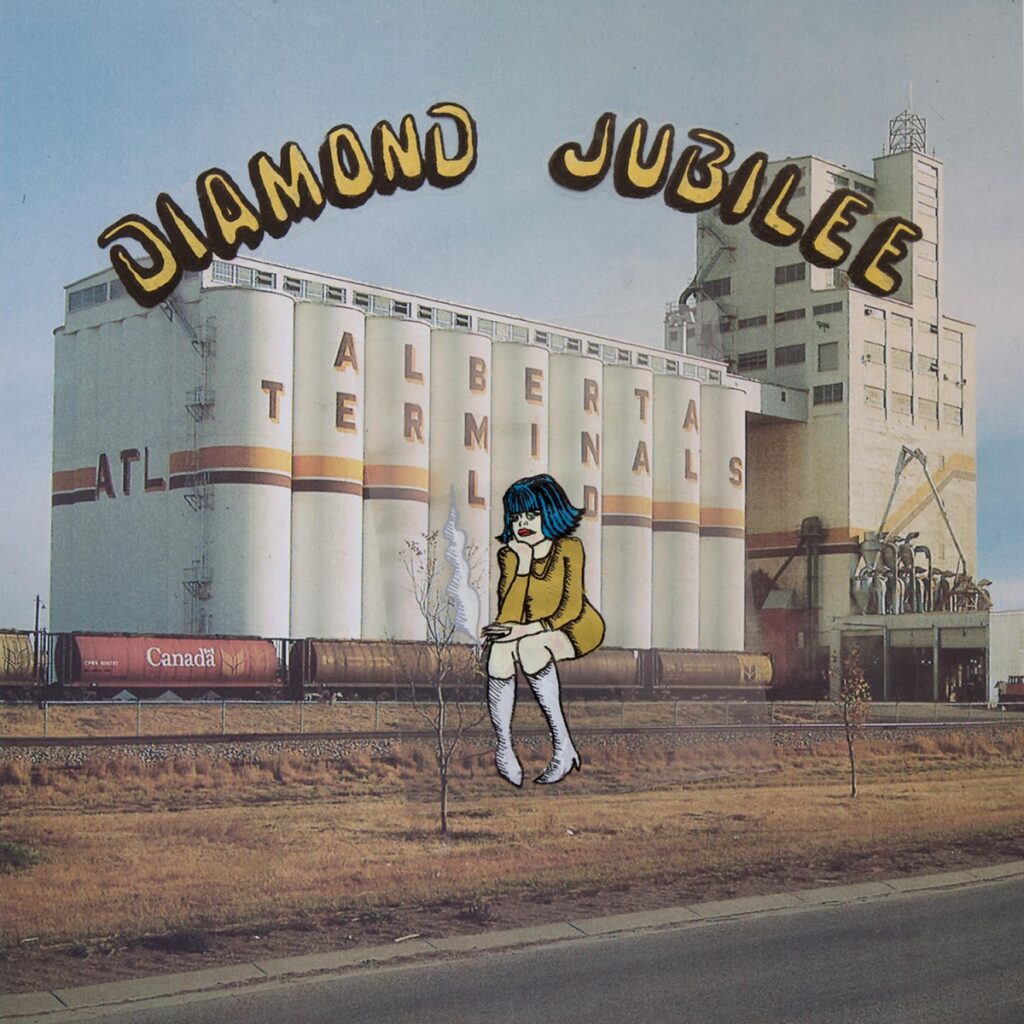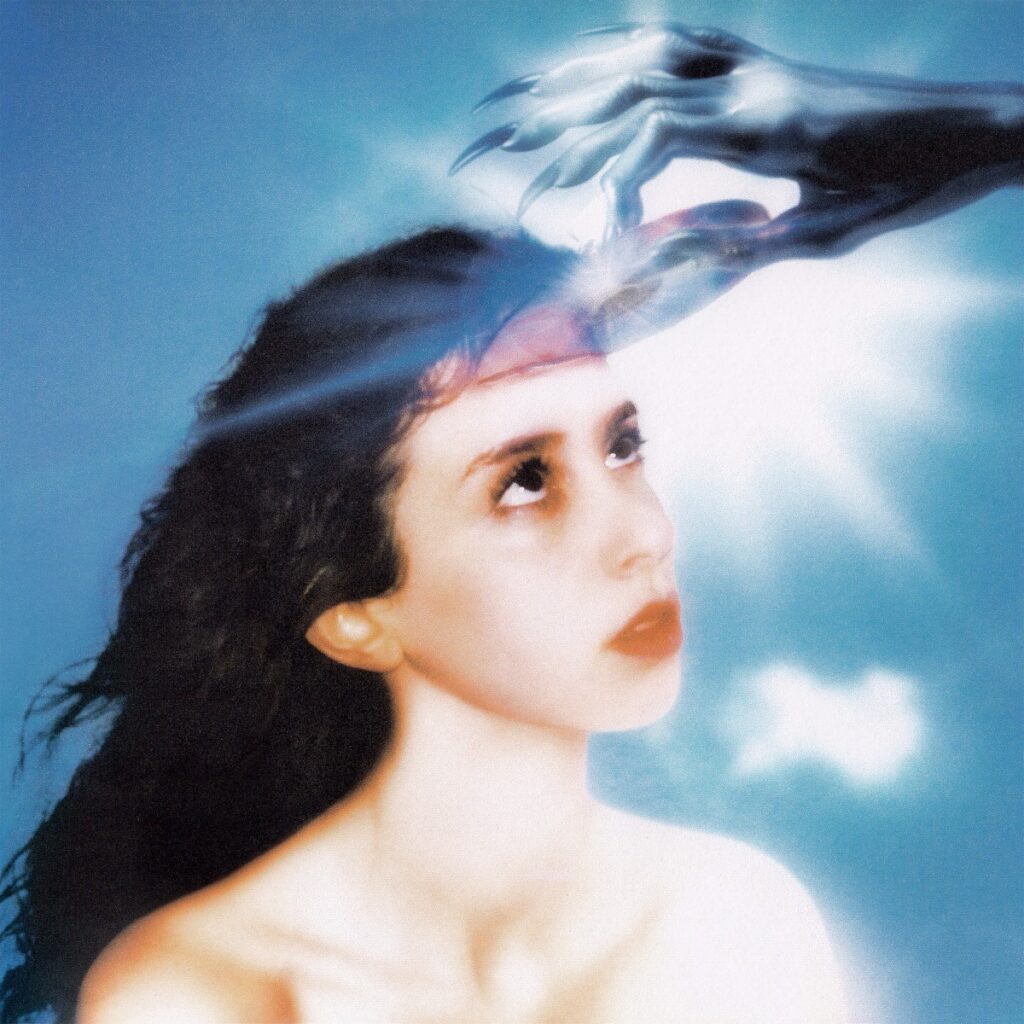Previously,
The Best 25 Albums of 2024: My Picks #25-21
The Best 25 Albums of 2024: My Picks #20-16
The Best 25 Albums of 2024: My Picks #15-11
The Best 25 Albums of 2024: My Picks #10-6
5.
Vampire Weekend, ‘Only God Was Above Us’

Vampire Weekend’s fifth studio album, Only God Was Above Us, marks a significant evolution in the band’s discography, as it is the first recorded by the trio of Ezra Koenig, Chris Baio, and Chris Tomson after the departure of multi-instrumentalist Rostam Batmanglij in 2016. Only God Was Above Us is deeply rooted in themes of existential introspection and societal reflection. Lead singer and songwriter Ezra Koenig crafts lyrics that ponder life’s complexities, a journey from questioning to acceptance, and the interplay of individual and communal conflicts. The album’s title is inspired by a newspaper headline recounting a 1988 aviation incident, symbolizing the precariousness of existence, a recurring motif throughout the album. Koenig’s lyrics are nuanced and reflective, with tracks like Hope exploring themes of political conspiracies and intergenerational conflicts, while Gen-X Cops addresses societal transitions and misunderstandings. In Classical, the band articulates the theme of history’s cyclical nature and the passage of time with lines like “How the cruel with time becomes classical”. This thematic depth offers listeners both a thought-provoking narrative and an emotionally resonant experience. Capricorn emerges as perhaps one of the band’s greatest songs to date, a subdued demi-ballad that offers Koenig’s weary advice, “You don’t have to try,” atop a bed of intricate melodies and refined production.
Only God Was Above Us is a kaleidoscopic indie rock, blend of art, experimental, and baroque pop, and it essentially represents a synthesis of Vampire Weekend’s past and present sounds, drawing from their early rapid-fire guitar riffs and combining them with a modern, experimental edge. This balance is evident in tracks like Pravda and Mary Boone, where traditional Vampire Weekend sounds intermingle with innovative production techniques. The production is dense and occasionally chaotic, reflecting the album’s thematic exploration of life’s unpredictability and the passing of time. The production’s meticulousness is exemplified by the inclusion of unconventional elements such as wild vocal effects on Pravda and a “Goldfinger”-esque brass section on The Surfer. Far from being a nostalgic endeavor, the album captures the essence of a band still willing to innovate, challenge, and ultimately, captivate; it’s a profound commentary on the complexities of the modern world.
Book of hours, Russian icons
And sand mandalas and Natarajas
And hex-sign barns, Ando churches
And whirling dervishes, long exposures
And these two tunnels go west and east
Let me bring you my masterpiece
You’re the author of everything
Use this voice and let it singMary Boone, Mary Boone
I’m on the dark side of your room
Mary Boone, Mary Boone
I hope you feel like loving someone soon
4.
Cindy Lee, ‘Diamond Jubilee’

This is a weird album that doesn’t stream on Spotify. It opts for an old-fashioned way: you go to its website, pay $20, and find the album in your email. Diamond Jubilee, the seventh studio album under the Cindy Lee moniker—by Patrick Flegel, formerly of the Canadian post-punk band Women—traverses a kaleidoscope of musical styles from classic lo-fi recordings to orchestrated rock. Diamond Jubilee is immersed in an introspective world, conjuring an ethereal ambiance that feels both haunting and nostalgic. This is an album that consistently gives out a Twin-Peaks vibe. It evokes a sense of timelessness, akin to tuning into a forgotten radio station where each track functions as a transmission from a bygone rock’n’roll era. The album is described as capturing a mystical resonance derived from recollections and echoed through time, a place where the notion of loss becomes a storehouse of memory. Themes of romance, heartache, and loss are woven throughout Flegel’s stylistic synths, resulting in a surrealist and hypnagogic pop experience. The album’s cover, featuring Cindy Lee against a backdrop of a grain elevator, symbolizes this storage of memory, suggesting an interplay between temporal permanence and transience. As Flegel transforms into their drag persona, the music becomes a vessel of unfinished feelings and philosophies, delineating an ineffable longing that refuses to fade.
Diamond Jubilee showcases an eclectic mix of influences, blending ‘50s and ‘60s pop with avant-garde orchestrated-rock experimentation. Each song is embedded with a dreamlike quality, sometimes dense and other times airy, contributing to a continuous sonic journey that is both expansive and intimate. The musical style spans lo-fi noise rock, psych-infused soundscapes, and retro-pop melodies reminiscent of Guided by Voices and Yo La Tengo. Flegel’s production choices result in a sound that feels both distant and close, akin to music heard through the walls. This auditory effect enhances the album’s mystique and emotional pull, drawing listeners into a personal yet universal experience. The use of vintage recording techniques further emphasizes this effect, with tracks sounding like they emerge from an underground cavern or a distant planet, while simultaneously rooted in contemporary production excellence.
The sheer volume of what Flegel has created willfully takes up space, and it’s expected that the listener will have to wrestle with something of this scope, even as they’re wowed by what they’re hearing. Beamed down from another world, Diamond Jubilee will always feel out of time and, therefore, feel at home in any given moment. The album’s sprawl has no beginning and no end. It’s just a question of when or where you’re ready to join it.
3.
Waxahatchee, ‘Tigers Blood’

Photograph of us in a spotlight, on a hot night
I was drifting in and out
Reticent on the off chance
I’m blunter than a bullseye, begging for peace of mind
I get ahead of myself
Bracing for a bombshellYour love written on a blank check
Wear it around your neck
I was at a loss
But you come to me on a fault line
Deep inside a goldmine, hovering like a moth
I lose a bit of myself
Laying out eggshells
The 2020 album Saint Cloud is where I fell in love with Katie Crutchfield and this amazing band of hers, and Tigers Blood is where I caught myself falling way too deep.
At its core, Tigers Blood is a reflection of Katie Crutchfield’s evolution—both as an artist and as an individual. The album explores themes of addiction, romance, nostalgia, self-acceptance, and the complexities of personal growth. Having embraced sobriety in recent years, Crutchfield delves headfirst into examining the layers of unresolved emotions that remain even after finding stability. Perhaps best summarized as an investigation of “adult-onset ennui,” the lyrical content underscores how life’s challenges persist long after the turbulence of youth. Songs like 365 portray the desperation and acceptance entwined in addiction, while tracks like 3 Sisters examine emotional vulnerability with nuanced metaphors. In Lone Star Lake, the narrator suggests a reckless, combustible coupling, with chaos and sadness lurking beneath the surface. Yet, the song’s languid bass, banjo, and lead guitar cast it in the colors of a lakeside sunset, luxuriating in the romantic memory of a time that was objectively dark but felt golden. The titular track, Tigers Blood, captures much of the album’s essence by intertwining images of nostalgia with self-imposed recklessness. Here, Crutchfield weaves vivid imagery—copperheads, spellbinding tambourines, and creeping dust—to evoke a sense of simultaneous longing and acceptance. It’s a reflection on the passage of time, where past choices and present realities collide, leaving listeners to ponder their own histories. In Evil Spawn, Crutchfield sings, “What you thought was enough now seems insane,” atop ascending riffs. This song, like many others on the album, exudes a kind of contentment and wisdom, reflecting an artist who is more reflective and self-assured than before.
Tigers Blood sits comfortably within the broader framework of the Americana genre, incorporating alt-country, folk, and indie-rock elements. However, the compositions are far from uniform: Crutchfield balances lush instrumental backdrops with moments of stripped-down intimacy, finding ways to create an almost cinematic sonic atmosphere. Collaborating once again with producer Brad Cook (also instrumental in Saint Cloud), Crutchfield achieves a polished sound without losing the raw emotionality that defines her work. The inclusion of pedal steel, banjo, and electric guitar provides a textural richness well-suited to the album’s sprawling themes. From the haunting basslines in Ice Cold to the expansive group vocals on the closing title track, the production seamlessly marries intimacy with grandeur and a sense of sonic coziness. Meanwhile, MJ Lenderman’s contributions on guitar add a dreamy quality that enhances tracks like Right Back to It. While Saint Cloud reinvented Waxahatchee for the sake of a redemption narrative, Tigers Blood shows how her older sound and older self are still part of her even amidst that reinvention.
If you fly up beyond the cosmos
It’s a long way to fall back down
You always go about this the wrong way
And I’m too wеak to just let you drown
So when you kill, I kill
When you ache, I ache
And we both haunt this old lifeless town
When you fail, I fail
When you fly, I fly
And it’s a long way to come back down
2.
Magdalena Bay, ‘Imaginal Disk’

Every night I pray to god that we could all use another album that has the equal artistic vision of Grimes’ Art Angels. In 2023, there’s Caroline Polachek’s Desire, I Want To Turn Into You. In 2024, there’s Magdalena Bay’s Imaginal Disk.
Imaginal Disk is a concept album deeply rooted in sci-fi narrative and metaphorical introspection. The title is derived from the biological term “imaginal discs,” structures in insect larvae responsible for metamorphosis into adult forms. Magdalena Bay reconfigures this biological marvel into a science fiction saga involving extraterrestrial implants in primates to trigger consciousness, follows Tenenbaum’s character, True, who undergoes a procedure akin to a hardware upgrade, prompting her to explore what it means to be human. Through this narrative, the album masterfully addresses themes of self-improvement, evolution, identity, and the essence of human connections. While the sci-fi narrative is a compelling framework, the core of Imaginal Disk is profoundly philosophical and reaches out to meaningful human interactions. By embedding a sci-fi narrative within their music, Magdalena Bay challenges listeners to ponder morden existential realities through speculative fiction. The album’s theme is depicted beautifully in tracks such as Angel on a Satellite, where True experiences moments of clarity and connection, learning to appreciate life’s simple pleasur. The track Watching T.V. evokes the numbing nature of modern media consumption, encapsulated through imagery of screen-induced hypnosis and an existential cleansing desire. On True Blue Interlude, Tenenbaum sounds like a spokeswoman for disc-implant procedures: “It’s here. Say hello. It’s you,” she says with the hair-raising certainty of a shampoo voiceover introducing a celebrity’s brand-new face. Later, on Fear, Sex, she sounds suspicious of the very idea of the computer-enhanced human: “Shoulda known those dirty bastards/Would put wires in your head.”
Imaginal Disk is an experimental foray into diverse soundscapes, blending elements from various genres to create an utterly unique sonic experience. The album builds on the duo’s synth-pop roots while incorporating influences from disco, progressive rock, and psychedelia. The production is intentionally kaleidoscopic and anachronistic, drawing from a multitude of influences ranging from Flash Gordon to Peter Gabriel, and even Björk. This multifaceted soundscape is achieved through a blend of pioneering synths, live percussion, and lush orchestration, creating a dynamic auditory experience that subverts straightforward pop conventions. Tracks like Death & Romance demonstrate Magdalena Bay’s prowess in crafting catchy anthems with substantial emotional depth. This song, with its vibrant mix of piano, guitar, and synths, encapsulates the album’s aesthetic at its most ambitious. The track might be reminiscent of tracks with big-tent synth-pop appeal, from George Michael’s era, but instead, it pushes those sonics to embrace an edgier, more conceptual frame. In contrast, Tunnel Vision offers a softer approach, beginning as a lullaby and gradually building tension before reverting to its serene state. Rarely does pop music ascend to such an intellectual and emotional plane of Imaginal Disk. It’s dorky and strange and dramatic, like the duo themselves. And it sounds like nothing I’ve ever heard.
Something is inserted, or taken out, or examined
Something lies dormant inside and it’s been there all along
Or you’ve swallowed it, or you’ve spit it out
Ten years or ten moments ago
Reflected in my eyes or floating behind yours
In your mother’s mother or your child’s child
In dream or awakeSay hello, it’s you, the purest you
Implanted, impatient, impossible
In memory, mirror, and membrane
Divine digits, the nightmare lifts
It’s here, imaginal disk
Say hello, it’s you
1.
Charli XCX, ‘BRAT’

It’s not just a BRAT summer. It’s a BRAT year. It’s the middle-age crisis of a just-turned-30 party girl; it’s a striking cultural phenomenon.
As Charli XCX’s sixth studio album, BRAT is a record that embraces the complexities of modern pop stardom while challenging the conventions of the genre; it’s an artwork that redefines what pop music can be. Charli XCX has described the album as her “most aggressive and confrontational record,” yet simultaneously her most vulnerable; a manifesto of raw truths and unfiltered emotions, navigating the intricacies of fame, friendship, femininity, and self-discovery. The album’s title itself, BRAT, suggests a rebellious and contentious attitude, which is reflected in both the music and the lyrics. One of the central themes of BRAT is female empowerment and self-expression, where Charli XCX dismantles stereotypes and redefines what it means to be a pop icon in the 21st century. The album explores emotions often brushed aside, such as grief, jealousy, and insecurity, with a candidness that resonates deeply with listeners. This thematic depth is evident in tracks like Sympathy is a knife and I might say something stupid, where Charli delves into her insecurities and industry rivalries. Charli XCX’s lyrical approach in BRAT is direct and conversational. She has stated that she is “over the idea of metaphor and flowery lyricism” and aims to say exactly what she thinks, the way she would say it to a friend in a text message. In Girl, so confusing she delves into the complexities of friendships in the spotlight, questioning the genuineness of connections versus strategic moves. In Apple, Charli contemplates her strained relationship with her mother and worries about the “rotten right to the core” generational trauma that’s been carried down to her. Driving is often a theme in Charli’s music, and in Apple, driving serves the same purpose as partying to Charli: escapism. So I, a tribute to Charli’s late collaborator SOPHIE, blends grief with admiration, showcasing Charli’s ability to convey deep emotions through her music.
BRAT is a sonically rich album that draws influence from the 2000s English rave music scene, with a more aggressive club sound than Charli’s previous album, Crash. BRAT embodies a paradoxical blend of hyperpop, electropop, and electroclash, providing a soundscape reminiscent of 2000s-era Ministry of Sound compilations. Charli XCX has worked with a tight collection of sounds to create a unique minimalism that is both loud and bold. A.G. Cook, Charli’s longtime executive producer, brings his shimmering arpeggios and countermelodies to a majority of the songs. Tracks like Von dutch and 365 pulsate with energy, showcasing Charli’s ability to create infectious hooks that stick with you long after the song ends. B2B features a segment where Charli’s voice loops “back-back-back” over a blurping bass, trap beat, and woozy, careening synthesizers, creating a mesmerizing and hypnotic effect. BRAT is a testament to Charli’s ability to redefine pop music continuously. The album encapsulates her journey from the underground London rave scene to the pinnacle of pop innovation, bridging the gap between commercial success and artistic authenticity. It’s an album that challenges listeners to reconsider the conventional boundaries of pop music while celebrating the vibrancy and diversity of Charli’s creative vision. In a social-media-fused era, Brat is an album that confronts all your societal anxiety and tells you it’s perfectly fine just to stay true to yourself.